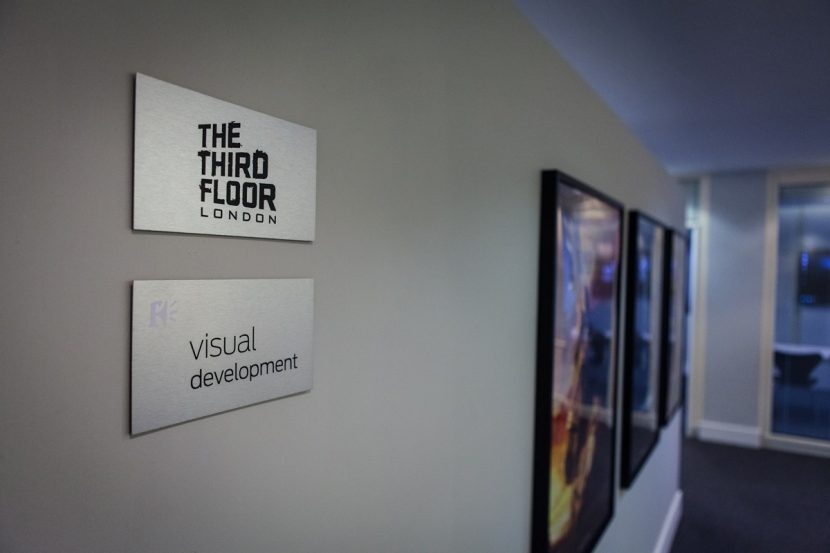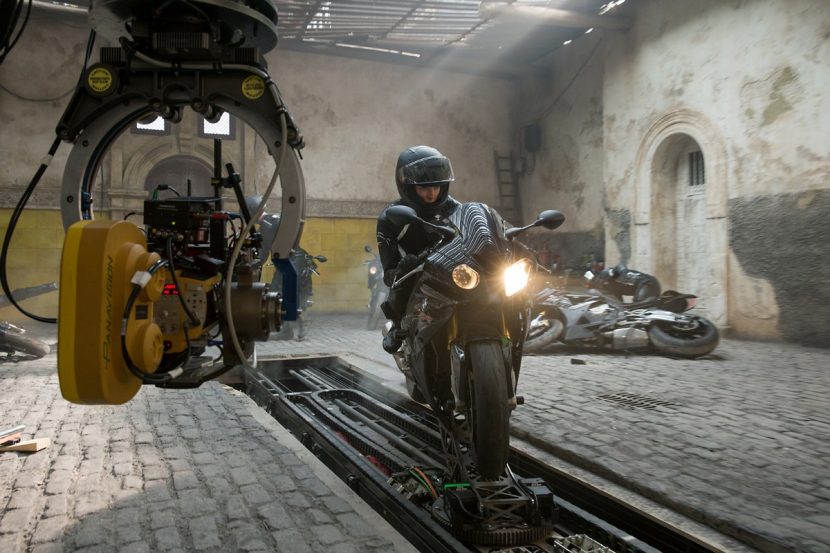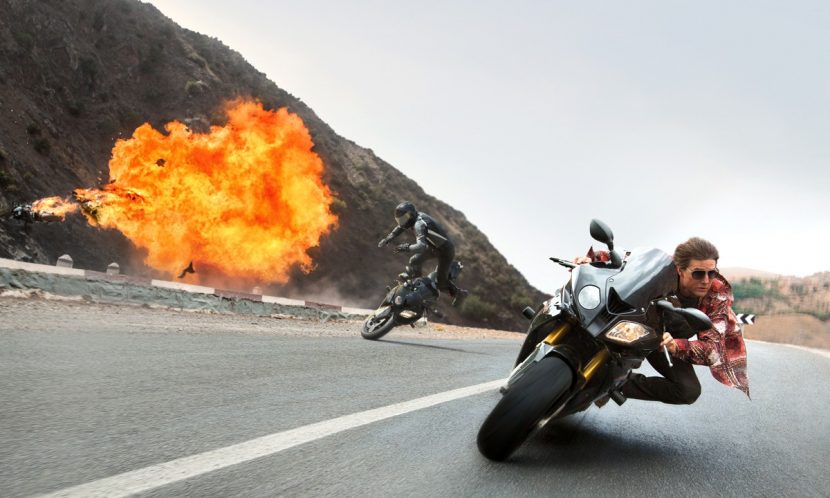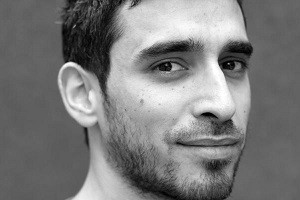Mission: Impossible – Rogue Nation is nearing US$400m at the worldwide box office. Audiences have flocked to a film that combines a carefully choreographed spy story with stunning stunts and effects. A crucial player in planning those stunts and effects was previs outlet The Third Floor London, which, under previs supervisor Vincent Aupetit, helped craft scenes involving Tom Cruise hanging onto an Airbus A400M, race through Morocco on a motorbike, swim underwater and spend time (fighting) at the opera. In this special fxinsider interview, we asked Aupetit about the previs work by The Third Floor London team.

fxg: Can you discuss the previs and techvis carried out for the Airbus A400M stunt? What was involved in working out camera positions, rigging locations, VFX requirements and storytelling opportunities?
Aupetit: Our team at The Third Floor London provided creative previs to support director Christopher McQuarrie and DoP Robert Elswitt in conceptualizing and lensing original stunts. We also developed extensive techvis to help the camera and stunt departments determine the possibilities and logistics of shooting such an ambitious sequence in camera with Tom Cruise doing the stunt himself. The previs was additionally used to help represent the potential and feasibility of the sequence for the studio and for Airbus, who was providing the plane.
https://youtu.be/HPtiE7TJ9Lc
Our previs artists built a CG model of the A400, using exact measurements and blueprints as well as technical stats about velocities the aircraft used for taxing and take-off. This helped make the previs extremely accurate as a staging ground for mapping the beats of the stunt and in visualizing camera angles.
We essentially tried to create circumstances as they would be on the day of the shoot. This included considering the function of different parts of the plane, how turbulence worked and where different grab-holds were. We also accounted for all the rigging for the camera.
fxg: Did Third Floor provide previs for the opera sequence? It initially did not seem like a major VFX sequence but of course as pieced together from so many locations – how did previs/techvis/postvis help?
Aupetit: Yes, it’s a big game of cat-and-mouse that takes place in the Vienna Opera House in the film but used two different locations for the shoot. The stage where “Turandot” would be played and other elements were built on a soundstage in London. Plates of the environment were shot at the Opera House itself in Vienna. These, along with tiles of crowd reactions, would be combined digitally with the elements shot on stage.
Aboe: The director breaks down the opera sequence.
Previsualizing the scene allowed the director to make creative choices about the storytelling and the pace of the sequence. Director of photography Robert Elswitt was also able to use the previs, which incorporated a model provided by the art department, to map out specific shots and determine what he would be able to get “in camera” from various positions.
Figuring out the likely coverage in previs aided planning for the visual effects shoot in Vienna as well as Double Negative evaluated how many extras were needed on location and how many tiles would be required to achieve the shots.
fxg: Can you talk about the way you approached the torus sequence in terms of the beats of the story? How did you also do techvis to show how it would be filmed?
Aupetit: The scene was originally previs’d at a count of around 80 shots. But the director decided to experiment with long, continuous underwater shots that would give more of a feeling of following Ethan Hunt as he struggles in this extreme environment. So we re-worked the previs as longer beats. The risk as a filmmaker in working these kind of extended shots is to end up with a camera that feels omniscient and fake, that disconnects the audience from the action rather than engaging them. But the sequence that was ultimately previsualized and filmed succeeded in following the character in a manner that was really natural and tangible – cinematic but also believable.
Watch part of the underwater torus sequence.
Throughout, I was able to use the experience I gained on Alfonso Cuaron’s Gravity on long cinematic shots to guide our previs animation team. With input from key departments and the director, we mapped out the various “beats” and junction points, where in the final film there would be near-invisible wipes or the camera would drift subtly away. Those beats could then be handled more readily as individual takes in the live-action shoot.
A scene like this clearly needed extensive prep and rehearsal, as well as incredibly precise execution, so we worked intently with the underwater DP, camera department, stunt, special effects and visual effects team to develop a roadmap in advance.
We brought as much information as possible into the previs, upon which we built the techvis. This included using models from production design to build a to-scale torus environment. We also integrated rigs created by the special effects team to test how generating currents inside the tank would work and what speeds and timing the camera needed. The special effects team could then reference our previs to create and refine the rig that would carry Tom underwater and further define the placement of the various turbines that would create underwater current. It was also essential for the divers and camera crew to know how much time each take would require, and how long Tom would have to hold his breath.
MISSION: IMPOSSIBLE – ROGUE NATION opens next week – July 30 in the UK and July 31 in the US. The movie has a…
Posted by ARRI Rental on Thursday, July 23, 2015
Above: A Facebook post from ARRI Rental outlining the ALEXA 65 and underwater housing.
In one beat, two actors needed to interact underwater during a very long take. This made working out the rigs, camera movements and choreography all the more important and difficult, but the whole sequence was just remarkably executed.
While production was rehearsing and shooting tests, we provided Double Negative with the approved previs, along with our models, props and techvis setups so they could work toward final vfx.
fxg: What was required for the car and motorcycle chase in terms of previs? Can you talk about asset creation here and what tools were used to build assets and environments and do animation and renders?
Aupetit: From the word go, the filmmakers’ intention was clear: create one of the most exciting and immersive chase sequences ever put on camera. There was a firm desire that Tom would perform the awe-inspiring stunts for real himself.
Based on storyboards provided by the stunts team and on briefs from the director, we started laying out the different set pieces. As The Third Floor’s previs would be used by the director to flesh out the story points that would help structure and pace the sequence, we delivered a sequence complete with a soundtrack and sound effects.

Meanwhile, the special effects and stunts teams were working on revolutionary rigs to shoot with the actor on the bike going at speeds in excess of 180mph! We took great care to gather as much information from them as possible about the specs of their equipment — type and functioning of their rigs, camera models and placements, specs of the cranes and speeds that each vehicle and rig could run. The amount of data we gathered allowed us to inform the previs in great detail. In return, we could assure the director and the other departments that the shots they were seeing in the previs reflected accurate speeds and distances, and that they would be achievable in camera.
The chase features two landmark stunts: the “180-degree slam” and the “Reverse Jump,” and we provided extensive techvis for both.
For the section that involves a high-speed chase on a busy motorway, we integrated our previs into footage the stunt team shot on location to get a feel for how the sequence would look, then helped calculate how many real background cars could be shot on location, and the amount of set extensions and additional background CG vehicles that would need to be added in post.
The last section was a high-speed chase on small mountain roads, including incredible lay-offs, near-misses and collisions. Here we again collaborated to visualize what the chase would look and feel like, and the support of previs material helped the teams make crucial decisions.

Previs asset creation was a combination of different setups. For environments, our shot creators blocked out the environments using a variety of assets from our library. They were each responsible for a particular section (Highway, Mountain Road, Countryside Backroads, Mountain Bridge, and two different street setups). They worked out the basic layout, set dressing and lighting that would allow them to quickly start blocking out the previs animation, stunts and cameras. Our resident asset builder would then revisit and embellish the environments while the rest of the team created shots. This workflow allowed us to be extremely flexible, and to get into shot creation across many different set-ups in record time. Most of the work on the chase was shot and stunt design, and we made sure to collaborate with the stunts and special teams to integrate setups into our layouts that matched the in-camera ones they would create.
As for the cars and bike models, BMW provided model information to production well in advance. We used extremely precise CG models for the cars and bikes that were then re-purposed and rigged for previs.
Other assets, including characters, props and various effects, were a combination of existing assets from our library and purpose-built ones for the show.
fxg: How big was the Third Floor team on Rogue Nation? How long was TTF on the show? How important was the studio’s role on a film like this, which also had some quick turnarounds and had some complex stunts and seamless vfx.
Aupetit: Work on the film was handled by our London previs crew, which included lead artists, shot creators and asset builders, as well as a show coordinator and supervisor. We worked alongside the production team at Warner Bros Leavesden Studios for seven months and thereafter for another cumulated month from our London Soho offices.

All images and clips copyright 2015 Paramount Pictures.
